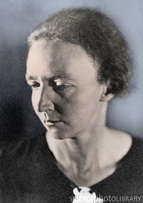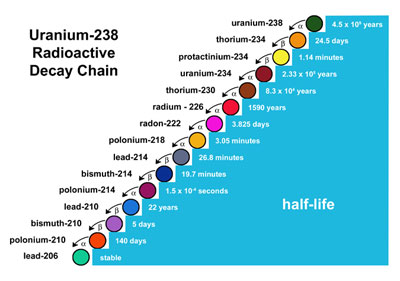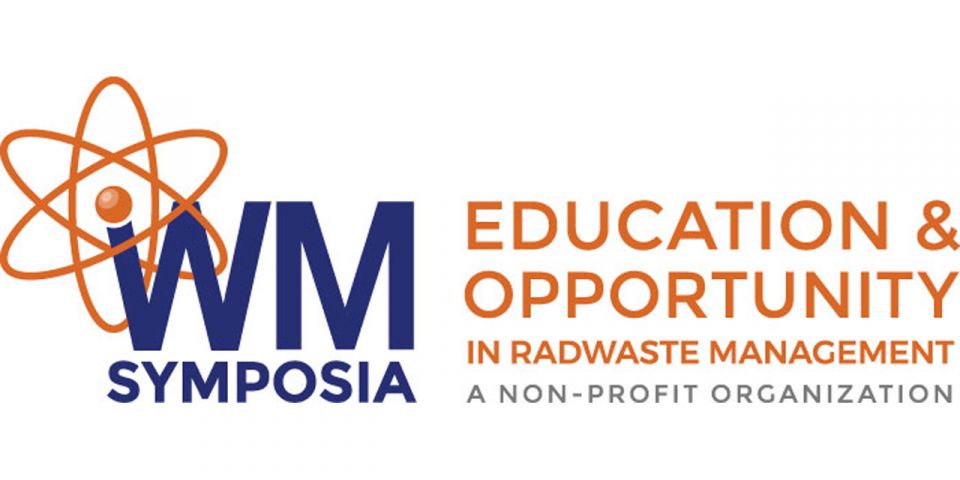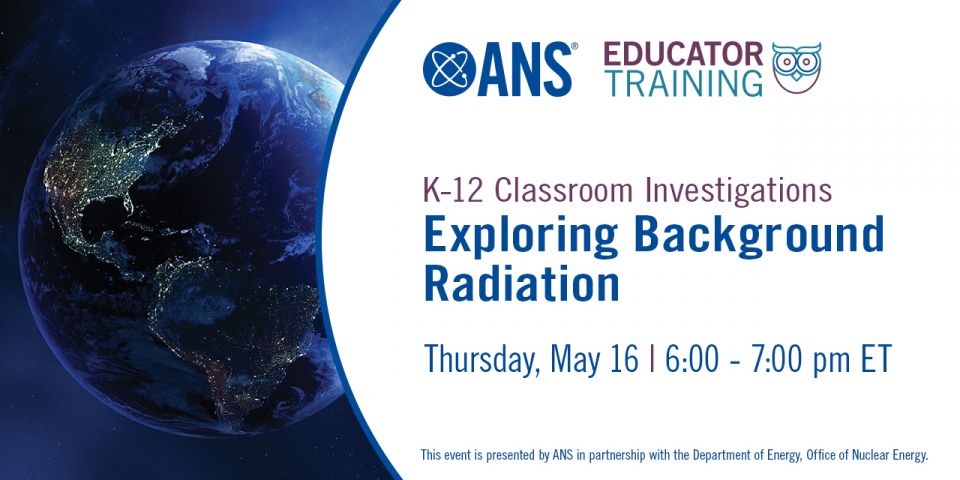Irène Joliot-Curie and the Alchemists’ Dream
 September 12, 2011 marks the 114th year since the birth of Irène Joliot-Curie, daughter of the powerhouse early nuclear researchers Marie Curie and Pierre Curie.
September 12, 2011 marks the 114th year since the birth of Irène Joliot-Curie, daughter of the powerhouse early nuclear researchers Marie Curie and Pierre Curie.
Like her parents, and like her husband Frédéric Joliot, Irène was a brilliant nuclear scientist, and among many other achievements, she accomplished a remarkable feat, dreamt of for centuries, that no human had ever attained.
The Alchemist's Dream
Before there was scientific chemistry (which slowly began to emerge in the 17th century), there was the anc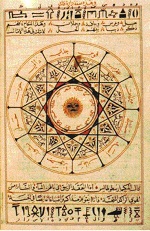 ient tradition of alchemy, spanning the centuries back to the ancient philosophers. Alchemy sought to create a "philosopher's stone," which would remove the "impurity" and "corruptibility" of ordinary metals, and thus transform these into noble, pure gold. For good measure, alchemy sought in the same way to remove the "corruptibility" of the human body to create an "elixir of immortality" - as well as artificial creation of life!
ient tradition of alchemy, spanning the centuries back to the ancient philosophers. Alchemy sought to create a "philosopher's stone," which would remove the "impurity" and "corruptibility" of ordinary metals, and thus transform these into noble, pure gold. For good measure, alchemy sought in the same way to remove the "corruptibility" of the human body to create an "elixir of immortality" - as well as artificial creation of life!
Impeded by plenty of non-scientific magic, mythology, mysticism, an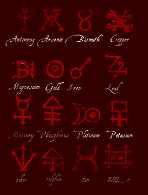 d an over-reliance on "ancient wisdom," these alchemical efforts were unsuccessful (as far as we know). Alongside the superstition, however, also grew up the precursors of modern chemistry and medicine, including periodic tables to predict the outcomes of reactions, and the general process of controlled experimentation in ancient "laboratories."
d an over-reliance on "ancient wisdom," these alchemical efforts were unsuccessful (as far as we know). Alongside the superstition, however, also grew up the precursors of modern chemistry and medicine, including periodic tables to predict the outcomes of reactions, and the general process of controlled experimentation in ancient "laboratories."
Early Research on Transmutation of Elements
In 1901, the experiments of Ernest Rutherford and Frederick Soddy revealed that Thorium was converting itself into Radium- a natural transmutation of one element into another! Keeping in mind that an element is defined by the number of protons in an atom, the duo basically observed radioactive decay of atoms of the naturally-occurring, but slightly unstable element Thorium-232 (90 protons + 142 neutrons) spontaneously emitting an alpha particle (2 protons + 2 neutrons) to transform into an atom of Radium-228 (88 protons + 140 neutrons). No alchemy was required! In fact, it was later discovered that naturally-occurring, long-lived, heavy radioactive elements such as Thorium-232, Uranium-235, and Uranium-238 spontaneously transmute to many other unstable elements, on a pathway ending in stable, non-radioactive isotopes of the element Lead.
Later, in 1917, Rutherford accomplished a transmutation of nitrogen into oxygen, by directing alpha particles at atoms of Nitrogen-14 to produce Oxygen-17. This was the first observation of a nuclear reaction, that is, a reaction in which particles from one atomic decay transform another atomic nucleus into a different element.
Eventually, in 1932, a fully-artificial nuclear reaction and nuclear transmutation was achieved by Rutherford's colleagues John Cockroft and Ernest Walton, who used artificially-ac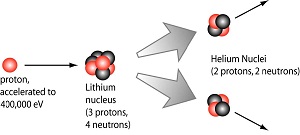 celerated protons to "split the atom" - transforming Lithium-7 into two alpha particles.
celerated protons to "split the atom" - transforming Lithium-7 into two alpha particles.
Enter Irène Joliot-Curie
The Joliot-Curie scientific couple received the Nobel Prize in 1935 for achieving something entirely new. They created a new isotope of Phosphorus, an isotope previously unknown, from the element Aluminum, using alpha particles emitted by the abundant radioactive element Polonium. For good m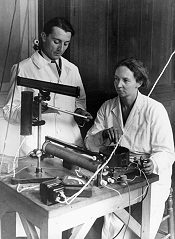 easure, they also transmuted ordinary Boron into a new isotope of Nitrogen, and ordinary Magnesium into a new isotope of Silicon. The Curies and other researchers had uncovered one method to do modern alchemy: Bombardment with alpha particles. Very importantly, the Curies developed relatively simple methods for identifying the new isotopes they had produced.
easure, they also transmuted ordinary Boron into a new isotope of Nitrogen, and ordinary Magnesium into a new isotope of Silicon. The Curies and other researchers had uncovered one method to do modern alchemy: Bombardment with alpha particles. Very importantly, the Curies developed relatively simple methods for identifying the new isotopes they had produced.
Also of great significance in the Curies' work was the abundance of their source materials, namely ordinary elements, enabling the creation of new radioactive materials relatively quickly and cheaply. This was, and remains, very important in the widespr ead use of radioactivity in medical diagnosis and treatment, saving millions of lives - as well as myriad other beneficial uses of radioactivity. The Curies did not precisely achieve the alchemists' dream of transforming elements into gold - rather, something entirely more valuable than gold.
ead use of radioactivity in medical diagnosis and treatment, saving millions of lives - as well as myriad other beneficial uses of radioactivity. The Curies did not precisely achieve the alchemists' dream of transforming elements into gold - rather, something entirely more valuable than gold.
And yes, modern "alchemists" have indeed successfully transmuted lead into gold, as the ancients and medeivals had attempted... but since lead is naturally stable, a tremendous energy is required to force those lead atoms to give up three protons to become Gold, which makes the cost of the process much higher than the value of the gold that results!


